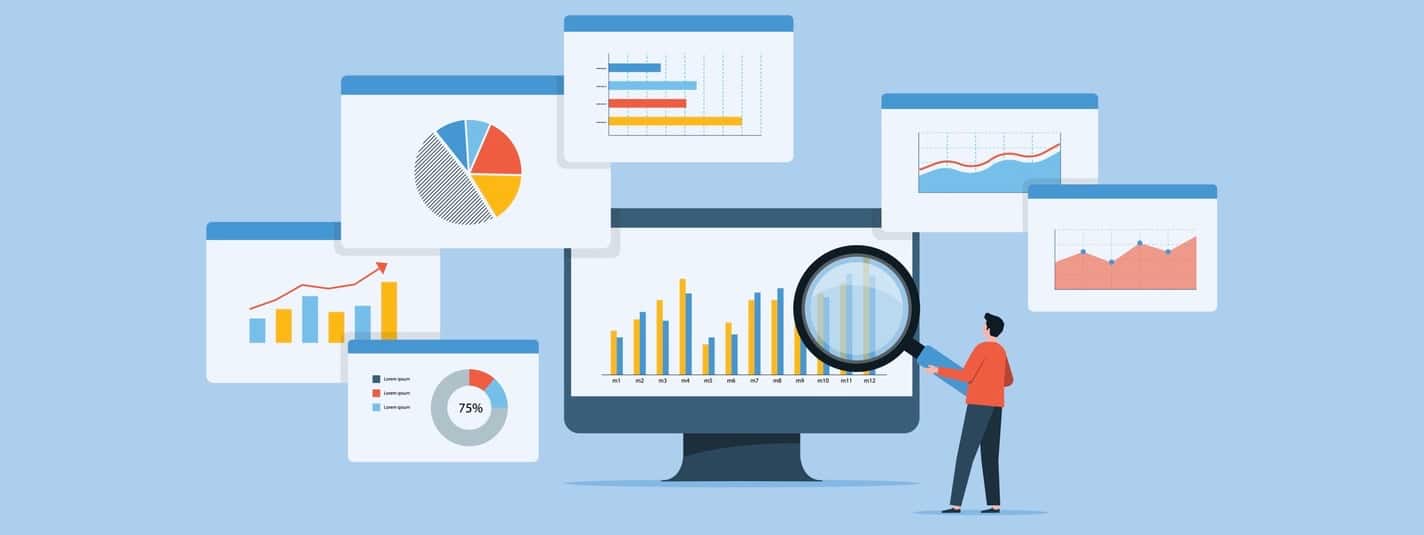In the ever-evolving digital landscape, data has become the lifeblood of successful marketing campaigns. By harnessing the power of analytics, businesses can gain valuable insights into consumer behavior, preferences, and trends.
In this blog, we will explore the concept of data-driven marketing and how leveraging analytics can significantly improve campaign performance. We will delve into the benefits of data-driven marketing, the types of data available, and practical strategies for using analytics to make informed decisions that drive results.

The benefits of data-driven marketing
Data-driven marketing offers numerous advantages over traditional approaches. Firstly, it enables marketers to make evidence-based decisions, minimizing the reliance on guesswork. By leveraging data, businesses can identify patterns, uncover hidden opportunities, and optimize their marketing strategies accordingly. Moreover, data-driven marketing allows for targeted audience segmentation, enabling personalized campaigns that resonate with specific customer segments. This, in turn, leads to higher engagement, increased conversions, and ultimately, improved return on investment (ROI).
Types of data for data-driven marketing
To implement effective data-driven marketing, it’s essential to understand the types of data available and how they can be utilized. Firstly, there is demographic data, which provides insights into the characteristics and attributes of your target audience. This includes age, gender, location, income level, and more. Secondly, behavioral data tracks customer actions, such as website visits, purchases, and interactions with marketing content. This data helps identify trends, preferences, and pain points. Thirdly, psychographic data delves into the attitudes, interests, and values of customers, providing a deeper understanding of their motivations and desires. Lastly, there is transactional data, which captures information related to customer transactions, such as purchase history, order value, and frequency.
Strategies for using analytics in data-driven marketing
Now that we have established the importance of data-driven marketing and the various types of data, let’s explore practical strategies for leveraging analytics to improve campaign performance.
Setting clear goals: Clearly define the objectives of your marketing campaign and identify the key performance indicators (KPIs) that align with those goals. This will help you measure the effectiveness of your strategies and make data-driven decisions.

Data collection and analysis: Implement robust analytics tools to collect and analyze data from various sources, such as website traffic, social media interactions, and email marketing campaigns. This will provide you with valuable insights into customer behavior, preferences, and engagement patterns.
Segmentation and personalization: Utilize data to segment your audience into smaller, more targeted groups. This allows for personalized messaging, tailored offers, and customized experiences that resonate with specific segments, increasing engagement and conversion rates.

A/B testing: Test different variations of your marketing campaigns, such as ad copies, visuals, or call-to-action buttons, to identify the most effective strategies. Analyze the data to determine which elements resonate best with your audience and optimize your campaigns accordingly.
Predictive analytics: Leverage predictive analytics to forecast future trends, customer behavior, and campaign performance. By identifying potential opportunities and challenges, you can proactively adjust your marketing strategies to maximize results.
Attribution modeling: Implement attribution models to accurately attribute conversions and sales to specific marketing touchpoints. This helps you understand which channels and campaigns are driving the most value, allowing you to allocate your resources effectively.

Continuous optimization: Regularly monitor and analyze campaign performance data to identify areas for improvement. Make data-driven adjustments, test new strategies, and optimize your campaigns iteratively to achieve better results over time.
Conclusion
In today’s digital marketing landscape, data-driven marketing has emerged as a game-changer. By harnessing the power of analytics and leveraging the wealth of available data, businesses can gain a competitive edge, improve campaign performance, and drive meaningful results. The benefits of data-driven marketing are evident in its ability to inform evidence-based decision-making, enable targeted audience segmentation, and deliver personalized experiences.
Through the implementation of robust analytics tools, strategic data collection, and continuous optimization, marketers can unlock valuable insights, identify trends, and capitalize on opportunities. Embracing data-driven marketing is no longer a choice but a necessity for businesses seeking to thrive in the digital age. So, dive into the world of data, embrace analytics, and elevate your marketing campaigns to new heights of success.
At Expand My Business, they are dedicated to providing comprehensive digital services that empower businesses to achieve their goals in the ever-evolving digital landscape. With a team of experienced professionals and a deep understanding of industry trends, we offer a wide range of services tailored to meet the unique needs of our clients.







